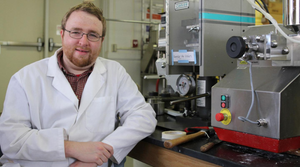December 27, 2013
Sticking a plastic medical device part or some plastic packaging in an oven to figure out how it will age years from now--it sounds like a good idea.
But there are plenty of ways to botch up the testing, says Karl Hemmerich, president of Ageless Processing Technologies in Sandy, UT.
"One of the shortcomings is using a temperature that's too high," Hemmerich says.
Hemmerich recalls a resin company that had a propylene part that was supposed to age well, but it actually had problems down the road because the testing had been conducted at a too-high temperature of 80 degrees Celsius, or 176 degrees Fahrenheit.
"It was crap. ... In real time aging it was actually less stable than competitive resins. They drove a stabilizing reaction inappropriately," Hemmerich says.
See Hemmerich deliver a talk on accelerated aging tests on Thursday, Feb. 13, 2014, at MD&M West in Anaheim, CA. |
The Association for the Advancement of Medical Instrumentation with its TIR 17 rules in the 1990s recommended 60 degrees Celsius, or 140 degrees Fahrenheit, as a limit for using heat to speed up aging and figure out whether knit lines or other issues could cause problems down the road, Hemmerich says.
Obviously, the melting temperature should be avoided when using heat to test a polymer's aging properties. But Hemmerich points out two other important temperatures: the glass transition temperature, at which the molecules inside the polymer start moving and potentially relieving stress to a part; and the crystalline temperature, which will cause the polymer's properties to change after it is cooled.
Issues can crop up with other age acceleration techniques, too, such as high oxygen environments.
"It's a question of understanding materials or resins and potential reaction pathways," Hemmerich says.
On top of that, Hemmerich finds that few companies understand sample size, either by having too large of a sample and driving up costs or having too small of a sample and not being able to properly define the quality of a part.
"If the potential defect is life threatening (critical defect), a larger number of samplings needs to be tested. If it's a minor defect (cosmetic, etc.), you can keep costs down by testing fewer samples," Hemmerich says. Sampling plans need to be primarily designed around the criticality of the defect and the variance of the attribute in the population," Hemmerich says.
Hemmerich, though, says there are good reasons to use accelerated aging tests: "You're trying to project forward in time ... and can't wait for the product to sit around five years before you launch."
Chris Newmarker is senior editor of MPMN and Qmed. Follow him on Twitter at @newmarker and Google+.
About the Author(s)
You May Also Like


